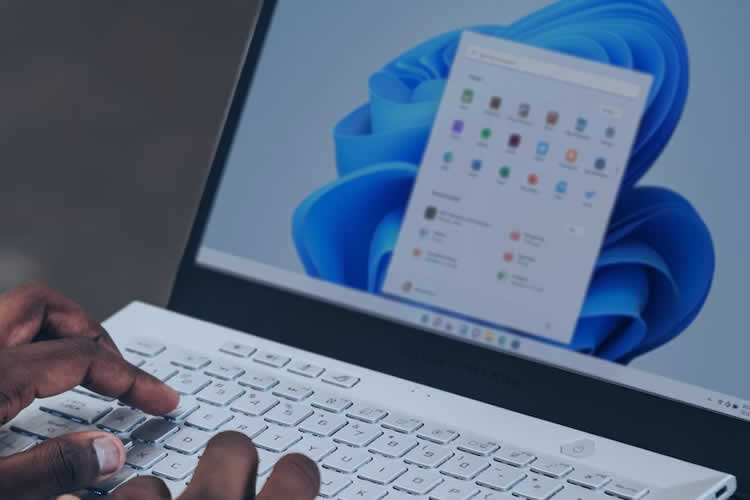
An Android developer is responsible for creating software applications that run on smartphones and tablets. They make sure that apps are responsive and take the minimum time to open.
Android developers also need to be proficient in Java, the programming language that underlies the Android platform. They should also know how to use a version control system like Git, which helps them keep track of changes and provide access to earlier versions of their code.
1. Java
As the world’s most popular mobile operating system, Android has created a huge demand for developers. Because of its open-source nature, it is easier to get started in this field than other platforms, making it a great choice for developers with different backgrounds.
Developing apps for Android requires an understanding of Java, the most popular programming language. It is a general-purpose language that allows you to create programs and applications that work across multiple hardware and software systems. It has a wide range of libraries, support forums, and documentation. It can be used to create native apps for Android devices, or can be integrated with the Eclipse IDE for cross-platform development.
In addition to Java, Android development also requires knowledge of Kotlin and C++. Additionally, it is helpful to have experience using a version control tool such as Git. This will allow you to coordinate projects, track changes, and go back to older versions of your code.
To develop an app for Android, you will need to use the Android Software Development Kit (SDK). This includes software libraries of prewritten code, a debugger, a device emulator, and documentation. It is important to understand the Android UI guidelines, which must be followed in order to ensure that your app will be compatible with most Android devices. This will allow you to create an intuitive and attractive user interface for your application.
2. Kotlin
The Android programming language Kotlin has gained a lot of popularity in the recent past and is rapidly overtaking Java as the preferred language for Android app development. It is a statically typed programming language that runs on the Java Virtual Machine (JVM) and is fully interoperable with Java code, allowing for seamless migration of existing applications to Kotlin. Its popularity stems mainly from the fact that it is concise, requiring less code for development and maintenance, and provides all the benefits of modern language features.
For example, it eliminates the need for boilerplate code in some cases and is able to detect errors such as Null Pointer Exceptions at compile time, making it much easier to debug an application. It also allows developers to use any style of programming they like as it supports both object-oriented and functional constructs.
Zomato, an online restaurant reservation platform, has made the switch to Kotlin and has seen significant improvements in their development process. Rahul and Prateek from the company explain how their team started using Kotlin, and how it has streamlined their development process, leading to more stable apps with fewer defects.
If you want to learn how to develop an Android app with Kotlin, Techno Study offers a Kotlin for Android course which will teach you all the essentials of this versatile language. You’ll be able to build and deploy two full-featured apps following detailed, step-by-step instructions. Learn how to create efficient, resilient views with Fragments, share data between these views with ViewModels, and handle asynchronous web service calls using Kotlin coroutines.
3. Design
Android is the world’s most popular mobile operating system, powering hundreds of millions of devices across 190 countries and territories. As a result, there is a lot of demand for apps built on this platform.
This work entails a variety of tasks, from creating and managing databases to coding backend services to connecting with external data sources and APIs. In addition, it includes a significant amount of testing and debugging.
To get started, developers need to understand the fundamentals of Android Development. This includes understanding what an application is used for, its business scope, and the value it provides to users. Identifying these factors can help determine the app’s purpose and ensure it is designed to solve real-life problems.
Developing an app also requires knowledge of a set of forward-thinking design guidelines and standards called Material Design. These are being rolled out by Google for all their products and provide helpful tips for layering elements on the screen and using certain visual styles.
One of the most important tools an Android Developer needs is a Version Control System, preferably Git. If you have to hire android app developers, make sure they have hand on experience with this tool. This allows developers to coordinate their work, track changes, and quickly revert to older versions of the code. It is also useful for sharing work with other developers. Finally, an Android developer should know how to use an advanced build tool known as Gradle. This tool makes it easy to integrate outside libraries and manage dependencies within an app.
4. UI/UX
User interface (UI) and user experience (UX) design are some of the hottest tech areas today. They’re the processes that digital products follow to make them accessible and usable by users of all backgrounds, ages, and abilities.
UI designers determine how digital products look by creating user interfaces that balance aesthetics and functionality. This includes buttons, images, text, sliders, and other visual elements that a user interacts with to get the desired results from a software program or website.
They’re also responsible for determining how these features can be organized on a screen to make them easier to navigate for users, including menus, navigation options, and content placement. In addition, they must be able to communicate their designs effectively with team members and stakeholders. This can include presenting at meetings or in front of users during a focus group discussion.
UX designers take the UI design process one step further by making changes based on user feedback and testing. They use prototypes to test different designs and user flows so they can see what works and what doesn’t.
A digital product with a UI and UX design that’s effective at prioritizing its users will ultimately lead to higher customer satisfaction, brand loyalty, and sales. As more and more devices become connected, the importance of UI/UX design will only increase. That’s why it’s critical for businesses to shift their focus from launching what they think their customers want to ensuring that their products meet or exceed expectations.
5. Testing
As a mobile platform, android has become a popular choice for app developers with a variety of technical experience. However, to excel in this field, there are certain skills that all Android developers need to learn.
Testing is an essential component of software development that helps detect errors and bugs in apps. It helps improve the quality of applications and ensures their compatibility with different devices. It is important for Android developers to be proficient in testing techniques and tools.
The Android SDK provides software libraries of prewritten code, a debugger, a device emulator, documentation, sample code, and tutorials. This helps Android developers create apps that look good and run efficiently on different hardware platforms. It also allows them to develop a deep understanding of the platform’s design and architecture.
Android apps are developed using the Java programming language and Extensible Markup Language (XML) files to describe data resources. The UI is declared in lightweight sets of XML resources, with each set being mapped to a specific device type. During runtime, Android applies the correct resource sets based on screen size, screen density, locale, and other attributes. It also checks whether a particular feature is available on a device and alters its behavior accordingly. Android app development is an exciting and challenging field, and it’s important for developers to know what they’re getting into before they dive in.
6. Deployment
Android app development entails multiple layers, and it is important to know how each layer works. Developers must have an excellent understanding of how the back-end services work with the front-end interface to develop a well-rounded application that is user-friendly. They also need to be familiar with the Material Design Guidelines set by Google.
One of the most essential aspects of Android application development is knowing how to create a dynamic, interactive UI that responds to user input. This can be done through various means such as using the screen rotation feature, enabling the device to vibrate to provide haptic feedback, or tapping on the keyboard forms. In addition, the application must be compatible with the variety of Android devices that exist in the market.
Another skill that is critical for Android developers is the ability to code. Writing an efficient and readable code is vital because it will save time during the testing and deployment process. This is why it’s essential to have a good understanding of Java or Kotlin, which are the preferred programming languages for developing Android applications.
Additionally, it’s helpful to have an understanding of the different phases of application development, such as collecting data, planning, prototyping, developing, testing, and launching. This will allow you to develop and deploy apps that are compatible with the Android platform and have a high user-engagement rate. It’s also essential to learn a version control system, such as Git, to coordinate with other developers and make revisions easily.
In case you have found a mistake in the text, please send a message to the author by selecting the mistake and pressing Ctrl-Enter.






